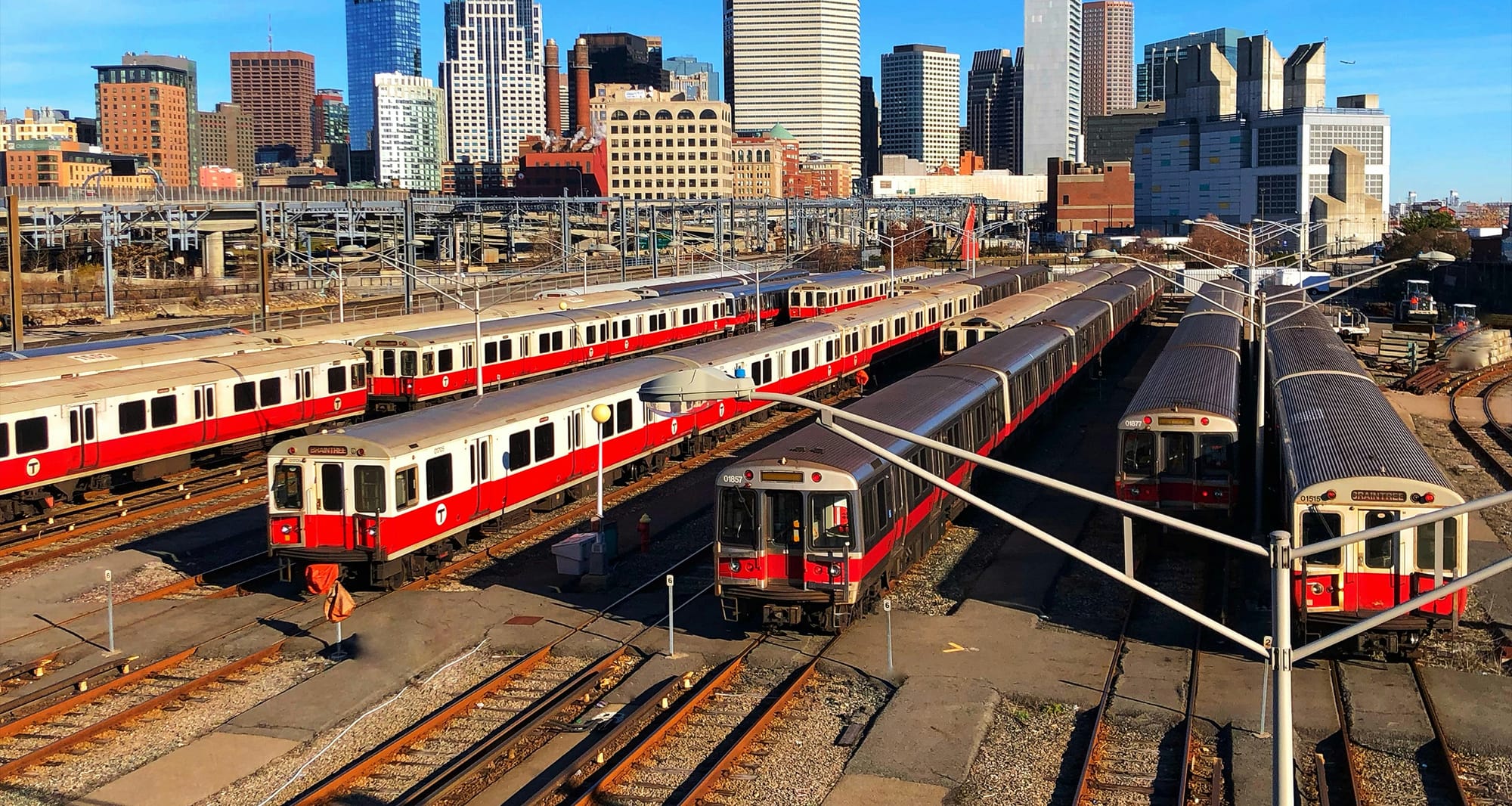
Boston is home to one of the most wheelchair-friendly public transportation systems in America, especially when compared to other cities of its size. This guide provides tips and information from a local (me!) for wheelchair users planning to get around Boston on public transit.
MBTA Subway, affectionately known as “The T”
The Boston “T” is largely accessible to wheelchair users. All subway trains can be accessed from the platform by a wheelchair, but not all stations are equipped with elevators to the street level.
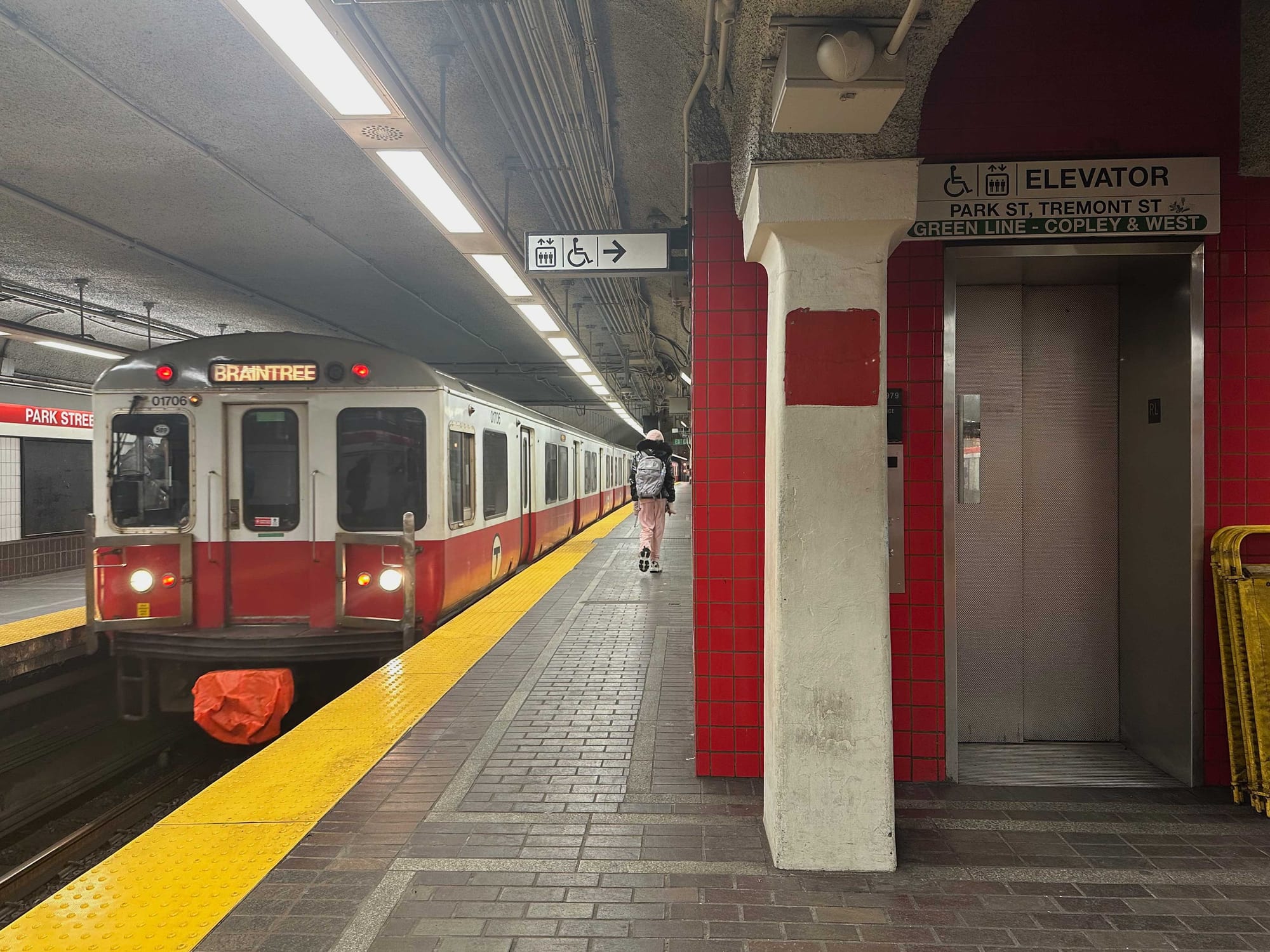
The following MBTA subway stations are NOT wheelchair accessible:
- Red Line (1 of 30 stations are not accessible) — Valley Road
- Blue Line (1 of 12 stations are not accessible) — Bowdoin
- Green Line (28 of 70 stations are not accessible) — Allston Street, Back of the Hill, Beaconsfield, Blandford Street, Boylston, Brandon Hall, Chestnut Hill Avenue, Chiswick Road, Dean Road, Eliot, Englewood Avenue, Fairbanks Street, Fenwood Road, Griggs Street, Hawes Street, Hynes Convention Center, Kent Street, Mission Park, Packards Corner, Riverway, Saint Paul Street, South Street, Summit Avenue, Sutherland Road, Symphony, Tappan Street, Waban, Warren Street
- Orange Line — Accessible at all stations.
- Silver Lines 1/2/3/4/5/W — Accessible at all stations/stops.
The good news is that the majority of the system’s inaccessible stations are on the Green Line and in areas that are not particularly useful to tourists interested in visiting the top wheelchair accessible attractions in Boston.
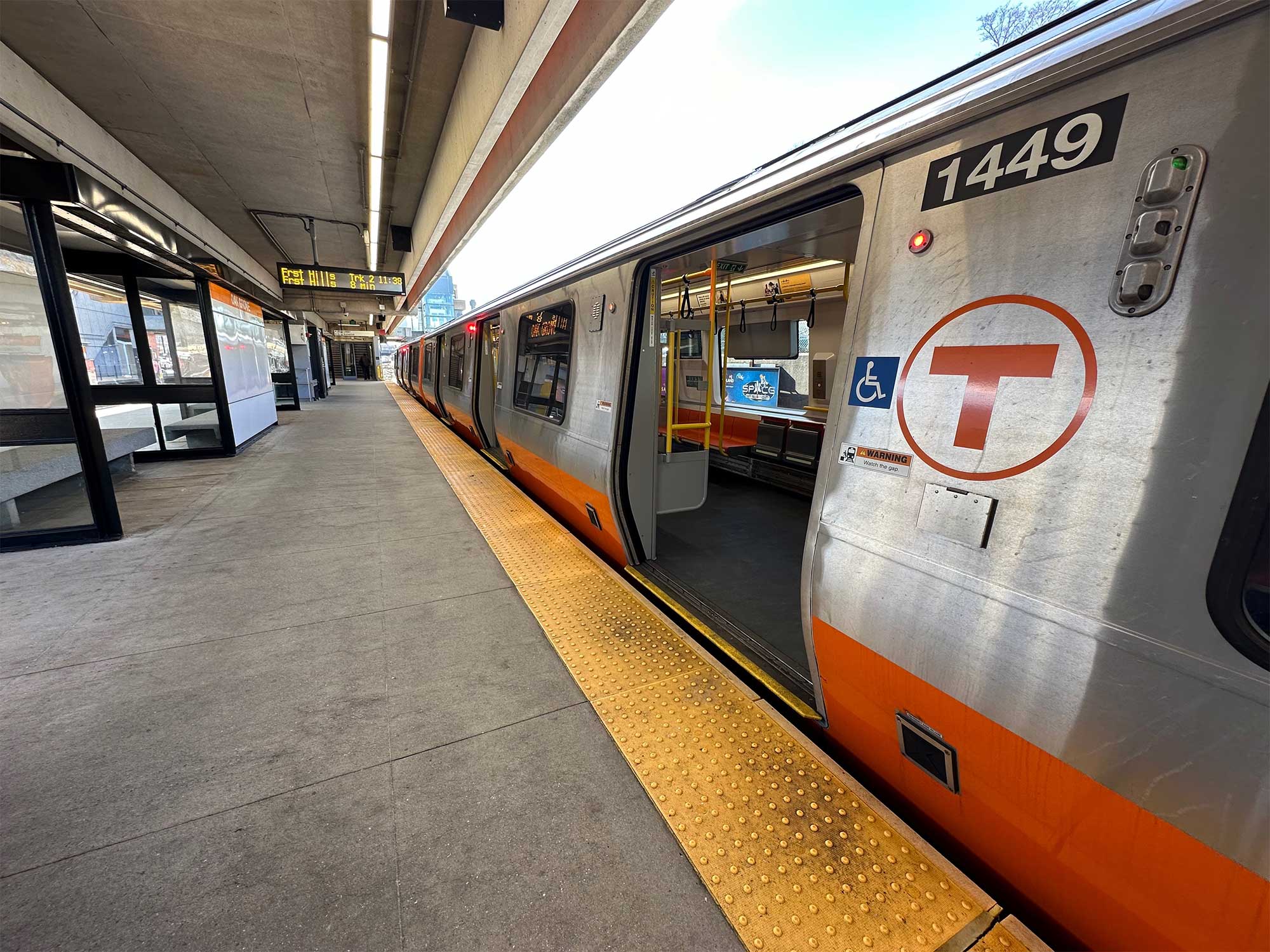
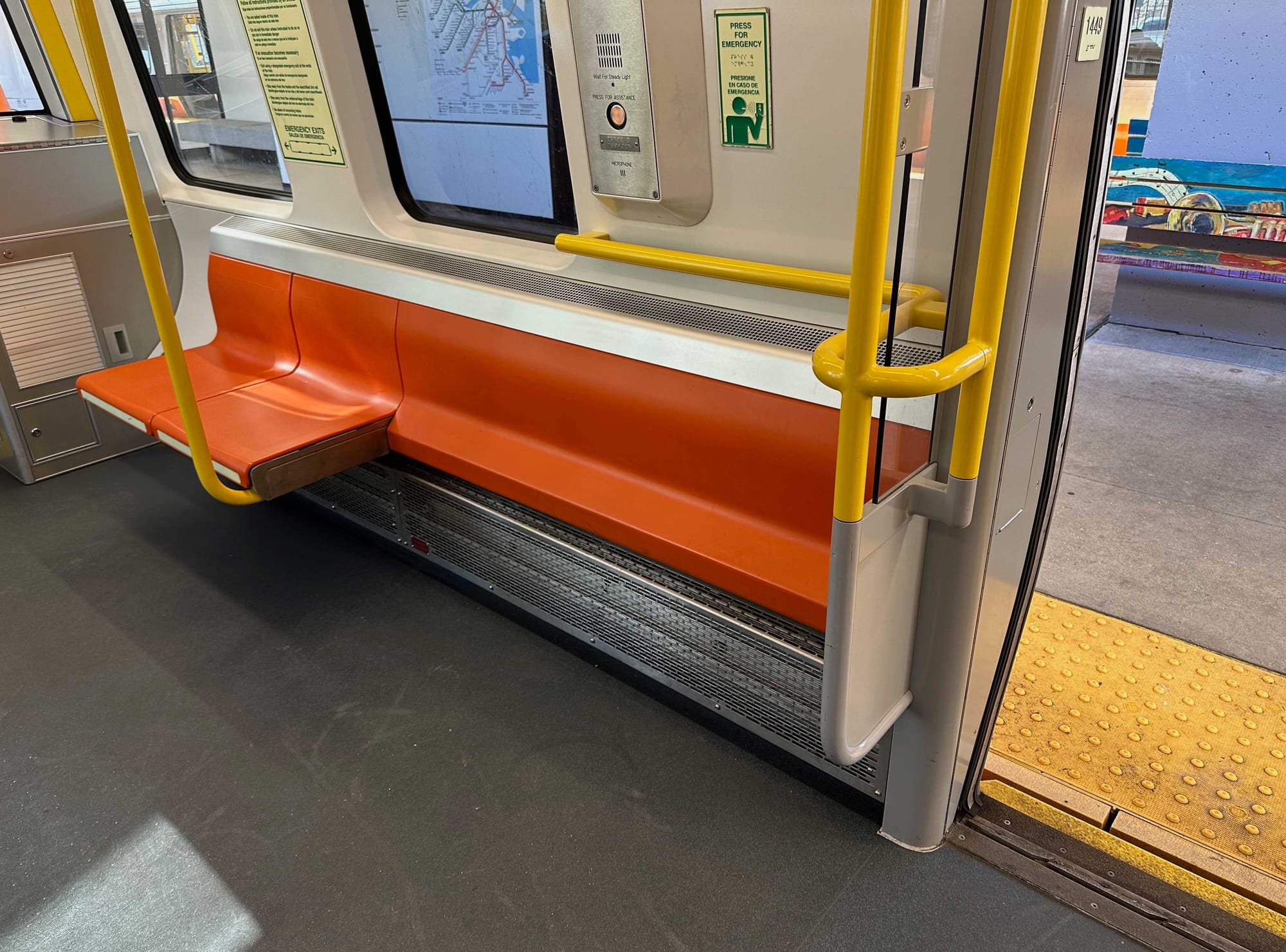
At all accessible stations, boarding of trains is easy with my power wheelchair. The gap between subway train and platform is typically about 1 to 2 inches, and the height variation is rarely more than one inch. For those unable to negotiate the gap, bridge plates are available at all stations and can be requested from a staff member in the station, or by pressing the “info” button on any station call box to speak with a dispatcher. Oftentimes, upon entering a station, staff ask me if I would like to use the bridge plate — this is great service!
There is one exception to this rule — Green Line subway cars are different from those on other lines, and there is a large gap between the train car and station platform. Fortunately, each Green Line train is equipped with an electronic ramp that, when deployed, bridges the gap to provide barrier-free entry. When riding the Green Line, wheelchair users should wait at the front of the train to get the attention of the train operator. The train’s operator can extend the ramp onto the platform. Pressing the blue button on the side of Green Line trains will also alert the operator that you require the bridge plate to be extended.
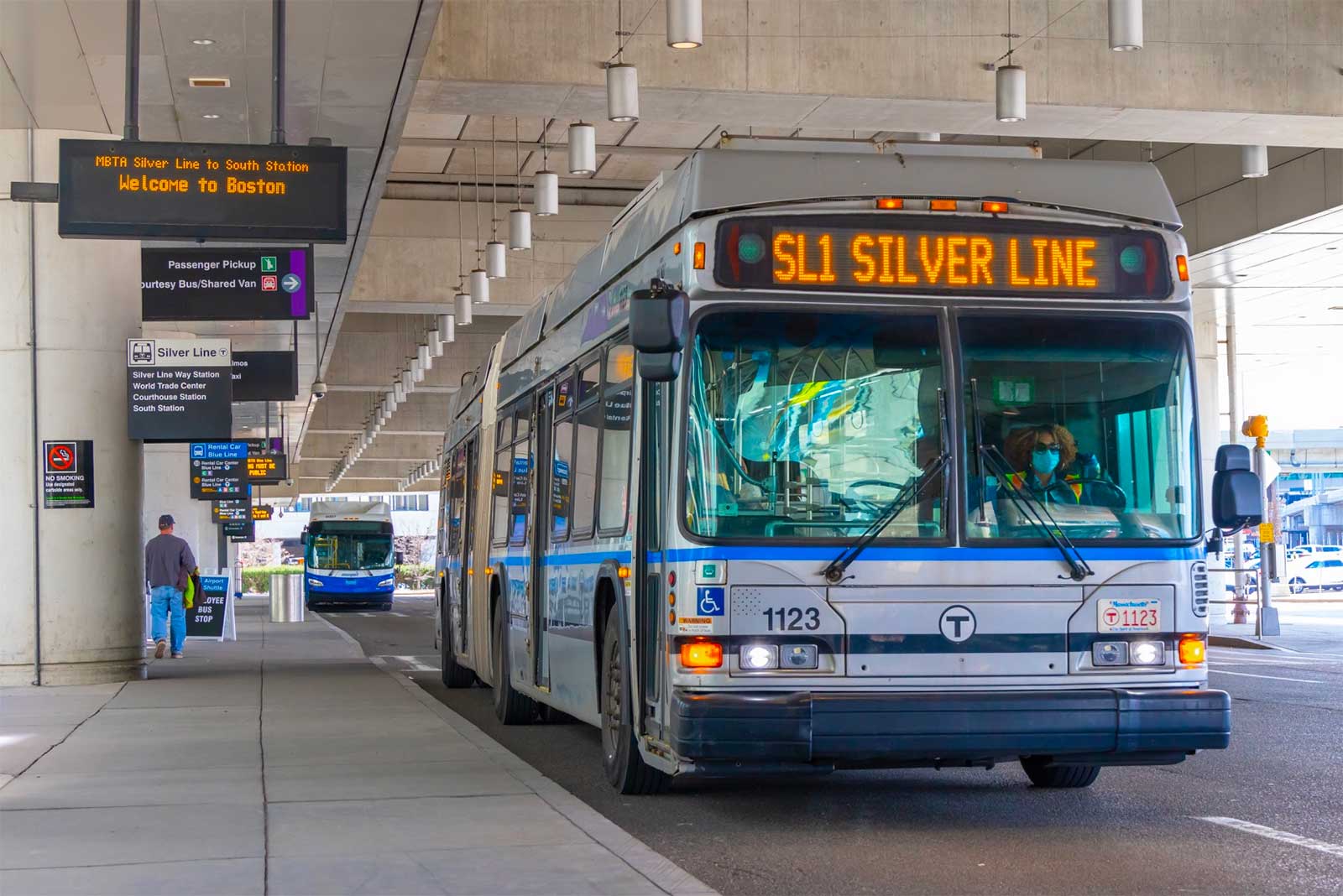
The Silver Line is a “subway” bus line that runs on city streets under diesel power, but also in underground tunnels powered by electric current. The Silver Line provides the most direct access between downtown Boston and Boston Logan International Airport. With stops at every airport terminal’s baggage claim, the wheelchair accessible Silver Line 1 (Lines 2, 4 and 5 do not serve the airport) runs every 5-10 minutes and makes the following stops: Logan Airport Terminals A/B/C/E, Silver Line Way, World Trade Center, Courthouse and South Station. South Station is the connection point for subway, commuter rail, Amtrak and intercity bus service.
For more information on riding the T with a wheelchair, see the MBTA’s Subway Access Guide.
By completing and mailing a reduced fare permit, seniors (ages 65+) and disabled patrons are granted a discount rate of up to 50% each way. The reduced fare permit details and application can be found at www.mbta.com (PDF). Fares on the commuter rail vary based on distance traveled, but never exceed $10.00 (full fare) or $5.00 for the elderly/disabled. More details on Boston’s subway, bus and commuter rail systems can be found below.
For a map of the Boston Subway “T” system, click here (PDF). All fares are $2.40 each way on the Boston subway and $1.70 on the city bus. All trips originating on the Silver Line at the airport are free.
MBTA Bus System
Boston’s city bus system is wheelchair accessible. 100% of city buses are equipped with lowered floors and wheelchair ramps/lifts, as well as securement spaces, tie downs and seatbelts for wheelchairs. Each bus has space for two wheelchairs. For bus times, schedules and directions, click here.
MBTA Commuter Rail
Numerous outlying cities as far as Providence, RI are served by the MBTA commuter rail. Fares range from $2.40 to a maximum of $13.25 each way, depending on the number of fare zones the commuter travels through. Those with a disability card or a noticeable disability (i.e.: wheelchair passengers) can take advantage of reduced fares that range from $1.10 to $6.50 each way. This discount on Commuter Rail tickets can be received at the MBTA South Station automated kiosks without completing the reduced fare application. Tickets can also be purchased from the conductor with cash or credit card. For information, routes and fares for the commuter rail system, see the MBTA Commuter Rail website.
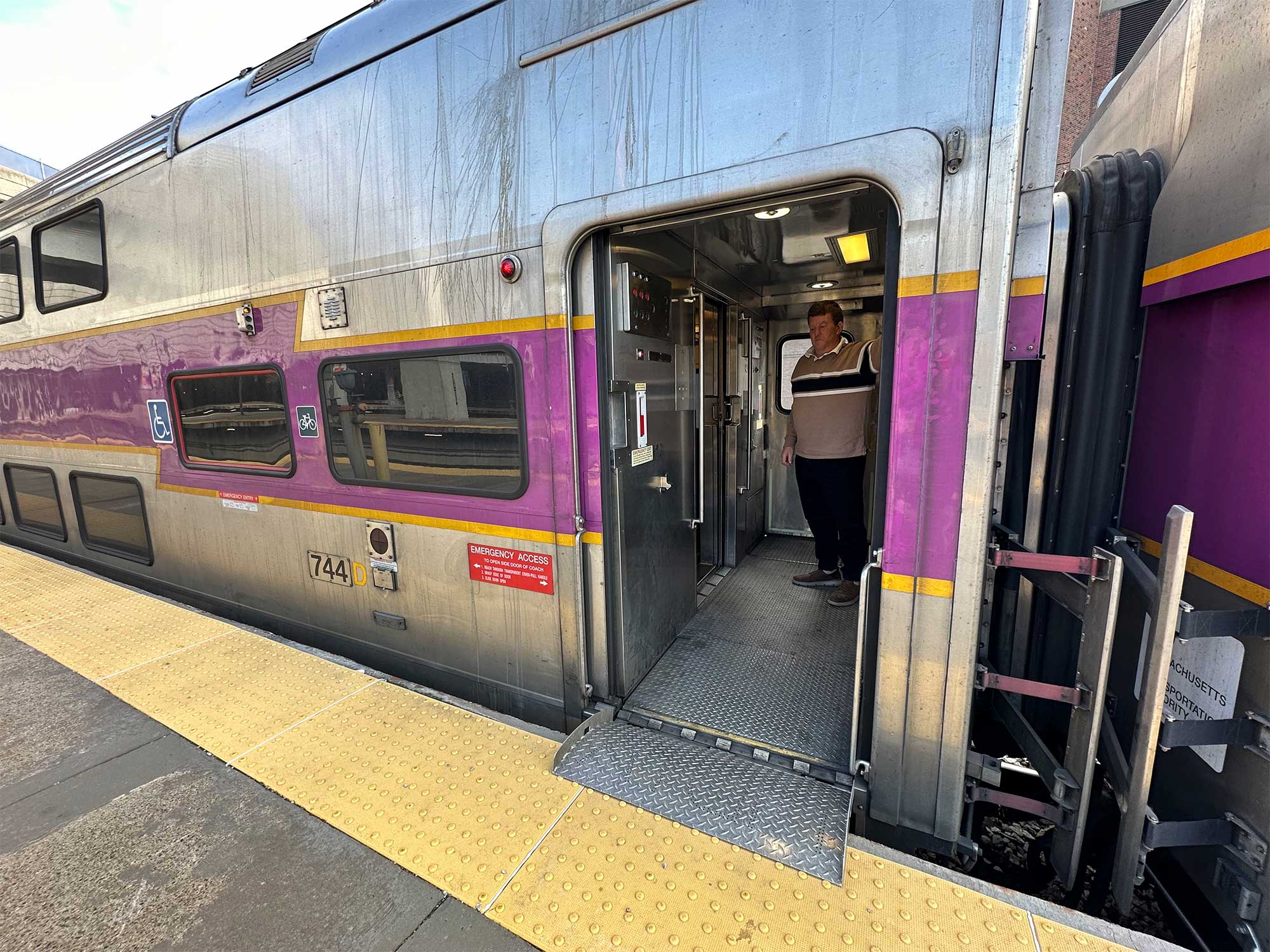
Commuter rail trains are accessible at stations with high platforms and those with so-called mini-high platforms, where an elevated boarding area with a ramp exists. Train operators place a bridge plate to make barrier-free boarding possible at accessible stations.
While most commuter rail stations are wheelchair accessible, there are some stations that have not yet received accessibility enhancements. The following MBTA commuter rail stations are NOT wheelchair accessible:
- Fairmount Line — All 9 stations are accessible.
- Fitchburg Line (7 of 18 stations are not accessible) — Ayer, Belmont, Concord, Kendal Green, Lincoln, Shirley, Waverley
- Framingham/Worcester Line (7 of 18 stations are not accessible) — Aurburndale, Natick Center, Newtonville, Wellesley Farms, Wellesley Hills, Wellesley Square, West Newton
- Franklin/Foxboro Line (5 of 17 stations are not accessible) — Endicott, Franklin, Islington, Walpole, Windsor Gardens
- Greenbush Line — All 10 stations are accessible.
- Haverhill Line (5 of 15 stations are not accessible) — Greenwood, Melrose/Cedar Park, North Wilmington, Wakefield, Wyoming Hill
- Kingston Line — All 10 stations are accessible.
- Lowell Line (1 of 7 stations are not accessible) — West Medford
- Middleborough/Lakeville Line — All 10 stations are accessible.
- Needham Line — All 12 stations are accessible.
- Newburyport/Rockport Line (1 of 18 stations are not accessible) — River Works
- Providence/Stoughton Line — All 17 stations are accessible.
Additional information about commuter rail accessibility can be found on the MBTA’s Commuter Rail Access Guide.
MBTA Ferry
Boston’s ferry system is comprised of three year-round routes that serve seven docks, all of which are wheelchair accessible, as well as seasonal service that extends the route network.
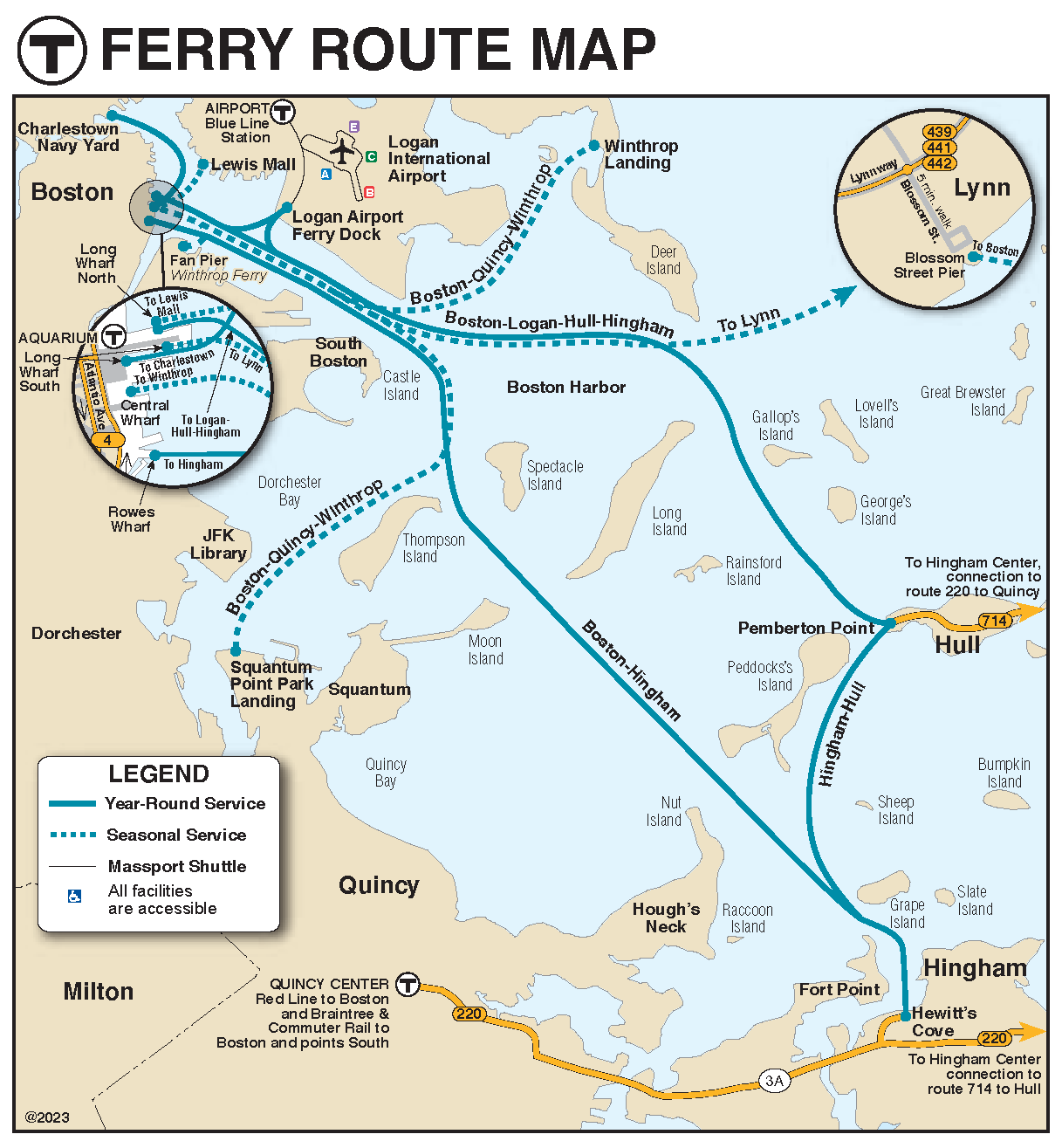
The two year-round ferry routes and their docking points are provided below:
- Charlestown Inner Harbor Ferry — Long Wharf to Charlestown Navy Yard
- Hingham/Hull Commuter Ferry — Long Wharf to Logan Airport Ferry Terminal, Hull, Rowes Wharf and Hingham Shipyard
Three ferry routes run seasonally in the spring and fall:
- East Boston Ferry — Long Wharf to East Boston
- Lynn Ferry — Long Wharf to Lynn
- Winthrop Ferry — Long Wharf to Logan Airport Ferry Terminal, Quincy and Winthrop
Each ferry dock is wheelchair accessible, and the ships themselves are also wheelchair accessible via boarding ramps, though variations in water level due to the tides may make it more difficult to board or disembark with a wheelchair at certain points of the day. Staff are always willing to help, and I have never been left unable to board a ferry vessel.
The cost of ferry rides ranges from $2.40 to $9.75, with the most popular route (Charlestown Inner Harbor Ferry) priced at $3.70 each way. Fares can be paid with the mTicket App, or with a paper ticket purchased onboard with cash, or with cash/credit at the Long Wharf, Rowes Wharf, Charlestown Navy Yard, or Hingham Shipyard ticket booths. To better understand ticket fares and passes, see the MBTA Ferry Fare Calculator.
Additional information on riding the ferry as a wheelchair user is available in the MBTA’s Ferry Access Guide.



